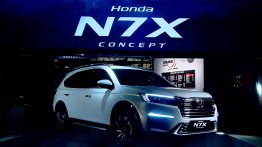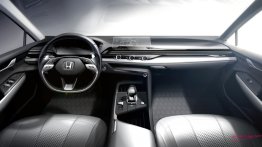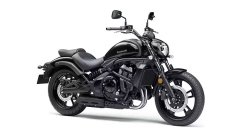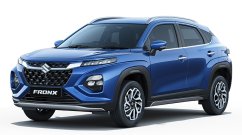
Honda has yesterday debuted a revolutionary new ‘Vehicle-to-Vehicle Communication’ system, which – it is anticipated – could reduce road casualties of both motorcyclists and car drivers.
Let me just give you the gist of the technology and you can read further the press release, after the jump
The bikes have systems similar to Wireless Lan and bikes within a definite range communicate among themselves. This system monitors all the parameters and displays any hazardous info on a readout.
The technology was demonstrated today for the first time, at the CAR 2 CAR Communication Consortium event which takes place over two days at the Opel Test Track in Dudenhofen, Germany. The demonstration exhibits the interoperability of the Honda life-saving system with other systems.
Honda has been a member of the CAR 2 CAR Communication Consortium since 2005 - part of Honda’s commitment to making the world a safer place for everyone and enhancing the joy of mobility – and has worked together with eight other vehicle manufacturers to enter a new era of road safety and efficiency where vehicle communication systems share vital information to aid safety and increase road-users’ awareness of what’s happening around them.
This work has resulted in the ‘Vehicle-to-Vehicle Communication’ system, which utilises wireless LAN technology to link vehicles within a defined radio range and establish an ad-hoc network. Each car or motorcycle can also send information to vehicles farther afield. The system continuously monitors the position, speed, distance and direction of surrounding road users, even in conditions of darkness and poor visibility.
Data on the location of cars and bikes, information on accidents, obstructions or congestion is centralised and then sent to drivers and motorcyclists to warn them of traffic conditions ahead or possible dangers.
Motorcycle riders can view information on a display, and receive safety warnings through advanced interfaces such as an in-helmet audio system. Drivers can view information and receive warnings, for example, on their navigation system display.
In 1999 an EU funded research project investigated the causes of motorcycle accidents. Data was collected on 921 bike accidents across five European countries and it was found that the majority of accidents involving a motorcycle are caused by perception failures. 88% of the accidents were caused by human error, with 37% being caused by the motorcyclist and in 50% of cases, the driver of the other vehicle was responsible. By researching methods of inter-vehicle communication, it is hoped that these rates will be lowered in the future.
The development of inter vehicle communication is part of Honda’s ongoing approach to safety for powered two-wheelers and follows a number of Honda’s previous safety initiatives over the last 60 years, including the use and development of advanced braking systems, the first ever motorcycle airbag system on Honda’s flagship GL1800 Gold Wing, through to the latest developments in advanced braking with the specifically-for-sports-bikes designed Combined ABS, available as an option on the 2009 CBR1000RR Fireblade and CBR600RR. Honda’s Motorcycle Rider Trainer and Rider Simulator are further innovations, both of which are used for hazard perception training.
General Manager of Honda (UK) Motorcycles, Steve Martindale, commented, “Honda is proud to lead the way in the field of motorcycle safety and there’s no doubt that this is an area where other motorcycle manufacturers are increasing their focus as well. The Car 2 Car Consortium’s research and work, coupled with Honda’s latest safety innovation will result in a new era of road safety for all road users, where vehicle communication systems share vital information with the aim of helping to reduce the number of casualties on the roads. Honda fully supports the EU targets for traffic fatality reduction and we’re pleased to be able to further our commitment under the European Road Safety Charter with this latest vehicle communication safety system.”
Source: Honda












